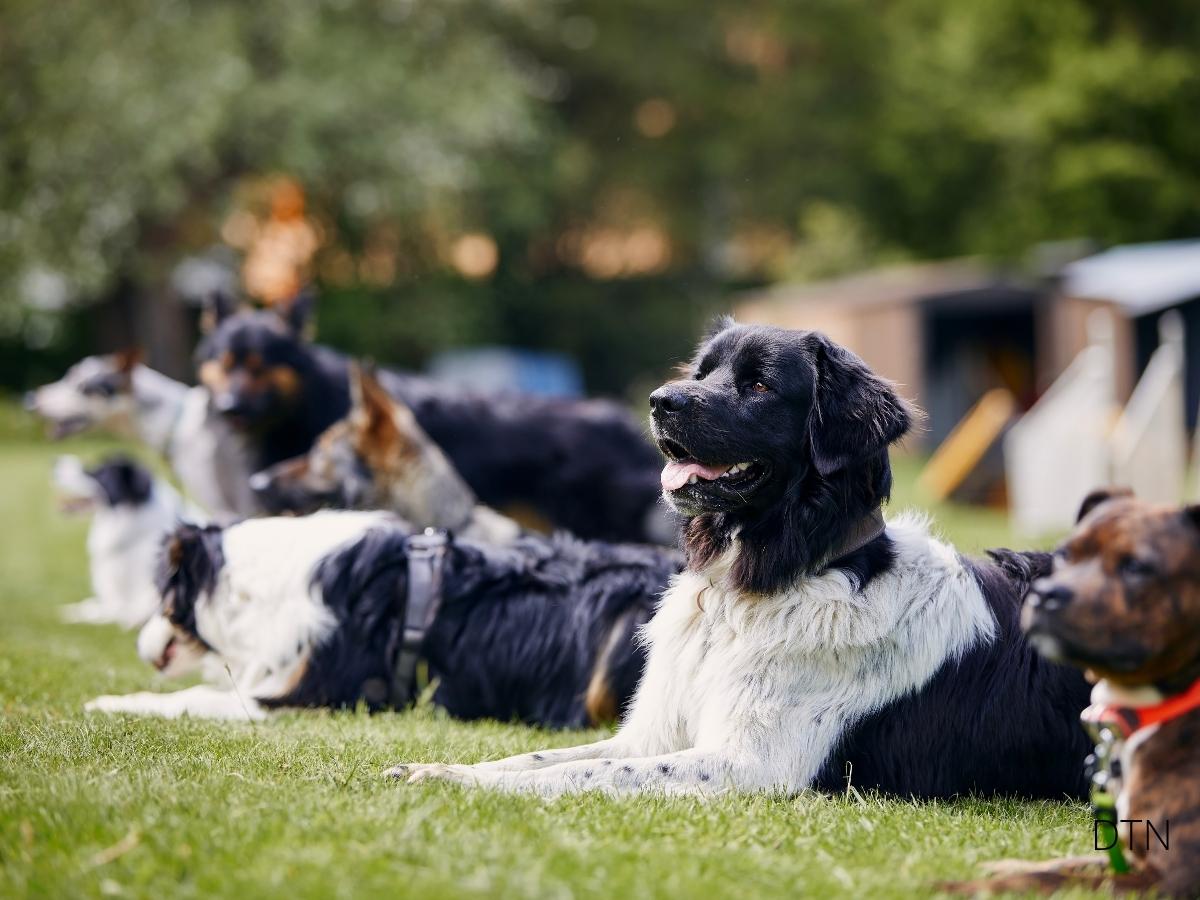Introduction: The Digital Pack Leader
Your smartphone knows your daily steps, your smartwatch monitors your heart rate, and now your dog’s collar can predict health issues weeks before symptoms appear. Welcome to the era of digital dog care, where artificial intelligence and wearable technology are transforming how we understand and care for our four-legged family members.
This isn’t futuristic fantasy—it’s happening in living rooms and dog parks across the world right now. Smart collars track more than location, AI-powered apps create personalized nutrition plans, and predictive analytics can identify illness patterns before your dog shows any signs of distress. But with dozens of devices, apps, and platforms flooding the market, how do you know what’s worth your investment and what’s just expensive tech hype?
Let’s cut through the marketing buzz and explore what this technology actually does, what it costs, and most importantly, whether it’s right for you and your dog.
Understanding the Technology: What These Devices Actually Do
The Three Pillars of Digital Dog Care
Modern canine technology rests on three fundamental capabilities: monitoring, analysis, and prediction. Each builds upon the other to create a comprehensive picture of your dog’s health and wellbeing.
Monitoring goes beyond basic tracking. Today’s devices measure heart rate variability, respiratory patterns, sleep quality, and even subtle changes in gait that might indicate developing lameness. A smart collar can detect that your dog’s resting heart rate has increased by 5 bpm over the past week—a change you’d never notice but might signal early illness or stress.
Analysis transforms raw data into insights. AI algorithms compare your dog’s patterns against their own baseline and millions of other dogs. When your usually active Labrador’s movement decreases by 30% on Tuesday, the system correlates this with weather data, your work schedule, and previous patterns to determine if this is concerning or just a response to the rainy day.
Prediction represents the true power of these systems. By identifying subtle pattern changes across multiple metrics, AI can forecast health issues with surprising accuracy. That combination of slightly increased water consumption, minor weight loss, and subtle activity changes might predict diabetes months before traditional symptoms appear.
Real-World Applications That Matter
You’re probably wondering what this means for everyday dog care. Here are the most impactful current applications:
Early disease detection saves lives and money. Continuous monitoring can identify heart arrhythmias, respiratory issues, and metabolic disorders in their earliest stages. One study found that AI-powered monitoring detected signs of heart disease an average of three months before clinical diagnosis.
Behavioral pattern recognition helps address problems before they become entrenched. The technology can identify anxiety triggers you might not notice—perhaps your dog’s stress always spikes when the recycling truck comes, or their sleep quality decreases when you travel for work.
Personalized nutrition moves beyond generic feeding guidelines. By tracking activity, metabolism indicators, and weight trends, AI platforms calculate precise caloric needs and can even identify food sensitivities through behavioral patterns after meals.
The Investment Reality: Costs, Savings, and Value
Understanding the Price Points
Let’s address the financial reality directly. Entry-level activity trackers cost $30-80 and provide basic step counting and sleep tracking. Mid-range systems ($150-400) add GPS, temperature monitoring, and AI-powered insights. Comprehensive health platforms run $400-1,200, offering advanced biometric monitoring and veterinary integration.
Most platforms require subscriptions ranging from $5-30 monthly for AI analysis and cloud storage. Multi-dog households can often save with family plans at $25-40 monthly for 3-5 dogs.
The hidden value comes from prevention. Early detection of diabetes could save $3,000-5,000 in treatment costs. Preventing one orthopedic surgery pays for a decade of monitoring. Some pet insurance companies now offer 5-15% premium discounts for continuous monitoring, recognizing that prevention reduces claims.
Making Smart Investment Decisions
Not every dog needs every technology. Young, healthy dogs might thrive with basic activity tracking to establish baselines. Senior dogs or those with chronic conditions benefit most from comprehensive monitoring. Working or athletic dogs need performance optimization features, while anxious dogs benefit more from stress monitoring capabilities.
Consider your lifestyle too. If you travel frequently, GPS and remote monitoring provide peace of mind. If you’re managing multiple dogs, platforms with family accounts and comparative analytics help you track everyone efficiently.
Getting Started: Your Implementation Roadmap
Week 1-2: Choosing Your First Device
Start with one device addressing your primary concern. Don’t try to build a complete system immediately—success comes from gradual integration. If you’re worried about your dog’s weight, begin with an activity tracker. Concerned about escaping? Start with GPS.
During these first weeks, don’t change anything about your routine. Let the device learn your dog’s normal patterns. This baseline becomes invaluable for detecting future changes. You might discover surprising patterns—your “lazy” dog might be quite active when alone, or your “energetic” dog might sleep poorly.
Month 1: Learning to Read the Data
Focus on understanding 2-3 key metrics rather than trying to master everything. For activity trackers, concentrate on daily movement goals and rest quality. For health monitors, focus on trends rather than individual readings.
Most importantly, learn what’s normal for your dog. Heart rate varying by 10 bpm throughout the day is typical. Activity dropping on rainy days is expected. Understanding normal variation prevents unnecessary anxiety about minor fluctuations.
Month 2 and Beyond: Expanding Your System
Once comfortable with basic monitoring, consider adding complementary technologies. GPS pairs well with activity tracking. Nutrition apps enhance health monitoring. Smart feeders complement weight management efforts.
The key is ensuring devices work together. Many platforms now support data sharing through Apple Health or Google Fit, creating unified health pictures. Before purchasing additional devices, verify compatibility with your existing system.
The bond with a true dog is as lasting as the ties of this earth will ever be.
– Konrad Lorenz

Breed-Specific Considerations: One Size Doesn’t Fit All
Special Needs by Breed Type
Brachycephalic breeds (Bulldogs, Pugs) benefit most from respiratory monitoring and temperature tracking. Their breathing challenges make heat stroke a constant risk, and smart collars that monitor core temperature can literally save lives.
Giant breeds need growth monitoring during puppyhood and early arthritis detection as adults. Weight tracking combined with gait analysis helps prevent developmental diseases and identifies joint issues early.
High-anxiety breeds require sophisticated stress monitoring. Heart rate variability tracking helps identify triggers and assess intervention effectiveness. Some systems even integrate with smart home devices to automatically implement calming protocols.
Toy breeds need miniaturized devices—standard collars can overwhelm a 4-pound dog. Look for sub-10-gram trackers with specialized attachments. These breeds also benefit from hypoglycemia monitoring through behavioral pattern analysis.
The Human Factor: Are You Ready for This?
Technical Requirements
You don’t need to be tech-savvy, but basic smartphone skills are essential. If you can use social media and banking apps, you can handle pet tech. Plan for a learning curve—basic trackers take about a week to master, comprehensive systems might require a month.
Daily time investment runs 5-10 minutes for basic monitoring, 15-20 for comprehensive systems. Add weekly 20-30 minute analysis sessions to identify trends and adjust care strategies. This becomes part of your routine, like feeding or walking.
Emotional Considerations
Continuous monitoring means knowing when things aren’t perfect. Every variation might trigger worry initially. Remember that the technology identifies significant changes, not normal fluctuations. Learn to trust the algorithms while maintaining healthy skepticism.
Some owners find comfort in objective data during difficult decisions; others find it adds stress. Know yourself and be prepared to step back if monitoring becomes emotionally overwhelming. The technology should reduce anxiety about your dog’s health, not create it.
Balancing Tech and Intuition
The most successful approach combines data insights with intuitive understanding. Use technology to inform your instincts, not replace them. When data and intuition align, act with confidence. When they conflict, investigate further.
Trust technology for detecting gradual changes, identifying patterns, and providing objective metrics. Trust your instincts when your dog seems “off” despite normal readings or when recommendations conflict with your dog’s history. You know your dog better than any algorithm.
Integration Tips: Making It All Work Together
Platform Compatibility
Apple ecosystem users get the smoothest experience with devices like Fi and Whistle that integrate with Apple Health. Android offers more flexibility through apps like IFTTT but requires careful device selection. Platform-agnostic solutions using WiFi and Bluetooth provide the most flexibility.
Prioritize data portability. Ensure you can export your dog’s health data in usable formats (CSV for analysis, PDF for vet visits). Your dog’s health history becomes invaluable when diagnosing chronic conditions—make sure you own and can access it.
Veterinary Integration
Direct integration with veterinary systems remains limited but is growing. Look for platforms that generate professional reports summarizing key metrics. Some offer telemedicine compatibility, displaying real-time vitals during video consultations.
Share your data strategically. Don’t overwhelm your vet with daily updates, but do bring trend reports to appointments. Most vets appreciate owners who monitor their pets closely, as long as the data is presented meaningfully.
Conclusion: Your Digital Decision
Digital dog care technology offers remarkable capabilities for understanding and protecting our dogs’ health. From early disease detection to personalized nutrition, these tools provide insights previously available only in veterinary hospitals.
But technology is just a tool. It can’t replace the warmth of your touch, the joy of your praise, or the comfort of your presence. The most successful integration happens when technology enhances rather than dominates your relationship with your dog.
Start small with one device addressing your biggest concern. Learn gradually, expanding only when comfortable. Remember that not every feature needs to be used, not every alert needs immediate response, and not every dog needs every technology.
The question isn’t whether to embrace digital dog care, but how to integrate it thoughtfully into your life. When used wisely, these tools help ensure your dog lives their healthiest, happiest life while deepening your understanding of their needs. The future of dog care is here—the choice of how to use it is yours.






